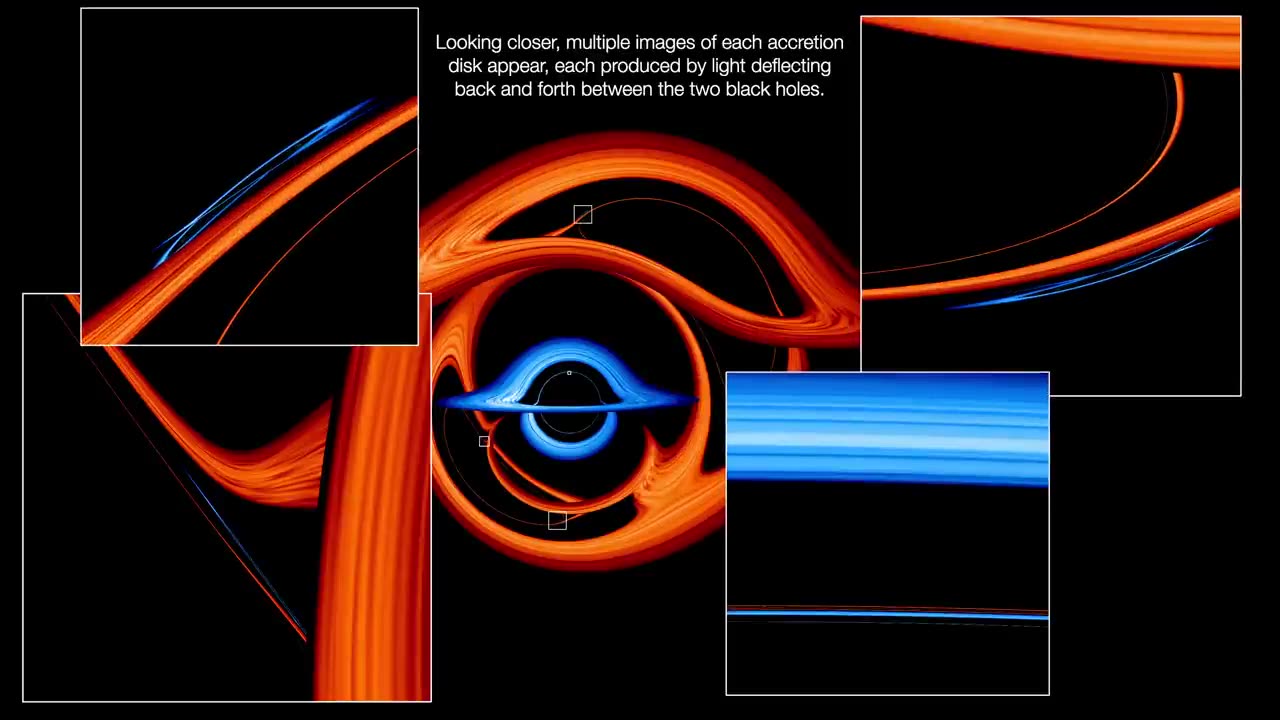Premium Only Content

The Doubly Warped World of Binary Black Holes
In the vast cosmic theater of our universe, few phenomena can rival the sheer spectacle and mind-boggling complexity of binary black holes. These enigmatic celestial objects, born from the fiery death throes of massive stars, create a cosmic ballet that defies our understanding of gravity and space-time. The Doubly Warped World of Binary Black Holes is a fascinating and awe-inspiring realm where two of these gravitational behemoths engage in a mesmerizing dance, warping the very fabric of space-time itself.
Binary black holes are pairs of black holes that are locked in a mutual gravitational embrace, forever orbiting one another. Their formation begins when two massive stars, often tens of times the mass of our sun, exhaust their nuclear fuel and explode in spectacular supernovae. What remains are the collapsed cores, each forming a black hole. Over the course of billions of years, these black holes gradually spiral inward, drawn together by their titanic gravitational forces.
As the binary black holes spiral closer to one another, they send ripples through space-time in the form of gravitational waves. These waves, predicted by Albert Einstein's theory of general relativity, are like echoes of the cosmic dance, propagating outward at the speed of light. It wasn't until the 21st century that scientists were able to detect these elusive ripples using incredibly precise instruments like the Laser Interferometer Gravitational-Wave Observatory (LIGO).
The Doubly Warped World of Binary Black Holes is a realm where space and time become a turbulent sea, roiled by the presence of these massive objects. As they spiral closer together, they accelerate, releasing tremendous amounts of energy in the form of gravitational waves. These waves carry away energy and angular momentum, causing the black holes to spiral even closer and faster. Eventually, they merge in a cataclysmic collision, unleashing an astonishing burst of gravitational waves and forming a single, even more massive black hole.
The collision of binary black holes is a violent and dramatic event, akin to the cosmic crescendo of a symphony. It is a moment when the two singularities, hidden within their event horizons, finally merge into one, sending ripples of distorted space-time cascading across the universe. These gravitational waves carry with them information about the black holes' masses, spins, and the conditions of their collision, providing astronomers with a unique window into the darkest corners of the cosmos.
The Doubly Warped World of Binary Black Holes challenges our understanding of physics, stretching the limits of our knowledge about gravity and the nature of space-time. It is a testament to the power and beauty of the universe, where two seemingly inscrutable objects engage in a cosmic dance that reshapes the very fabric of reality. As scientists continue to observe and study these binary black hole systems, they unveil new insights into the mysteries of the universe and further confirm the predictions of Einstein's groundbreaking theory of general relativity.
-
 LIVE
LIVE
Dr Disrespect
5 hours ago🔴LIVE - DR DISRESPECT - PUBG - 5 CHICKEN DINNERS CHALLENGE!
3,286 watching -
 LIVE
LIVE
Candace Show Podcast
5 hours agoHarvey Speaks: The Project Runway Production | Ep 1
4,641 watching -
 DVR
DVR
VSiNLive
58 minutes agoFollow the Money with Mitch Moss & Pauly Howard | Hour 1
1.77K -
 2:28:18
2:28:18
Nerdrotic
3 hours ago $2.18 earnedOscars Aftermath | Super Chat Square Up - Nerdrotic Nooner 469
16.3K4 -
 1:09:41
1:09:41
Sean Unpaved
5 hours ago $2.09 earnedUnpaved
15.8K3 -
 LIVE
LIVE
Revenge of the Cis
3 hours agoEpisode 1455: Cover Up
1,230 watching -
 1:01:18
1:01:18
In The Litter Box w/ Jewels & Catturd
23 hours agoUK DUPLICITY | In the Litter Box w/ Jewels & Catturd – Ep. 753 – 3/3/2025
39.3K23 -
 DVR
DVR
Vigilant News Network
4 hours agoHillary CRUSHED by Hegseth After She Suggests His KREMLIN Ties | The Daily Dose
17.9K6 -
 51:22
51:22
The HotSeat
1 hour agoZelensky: The GOAT Of Grifting!
3.85K1 -
 2:05:00
2:05:00
The White House
5 hours agoPresident Trump Makes an Investment Announcement
28.3K9